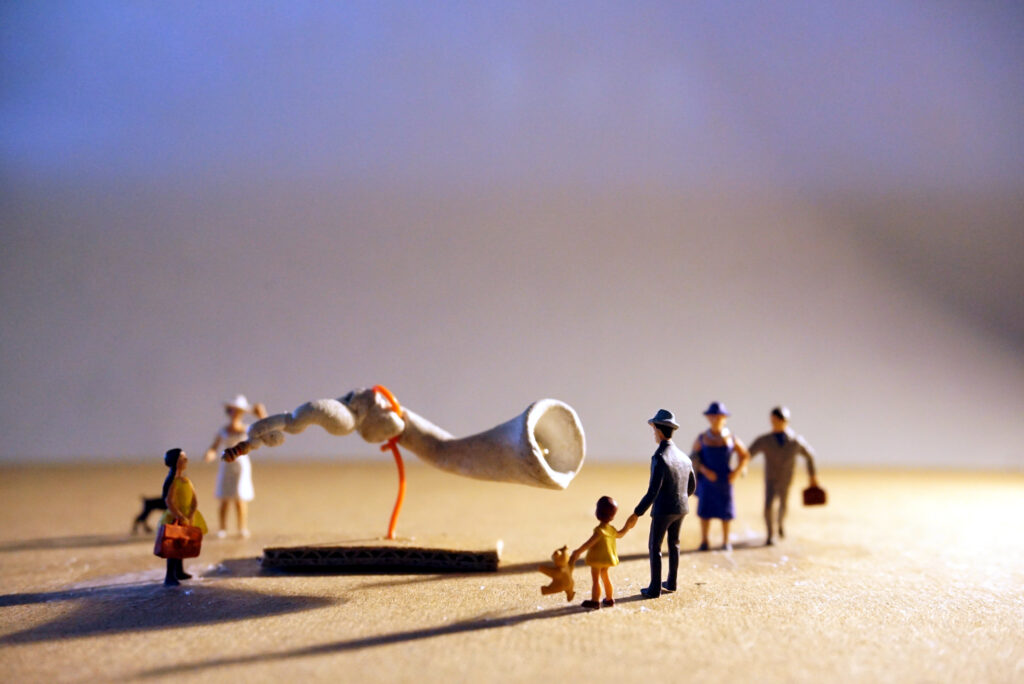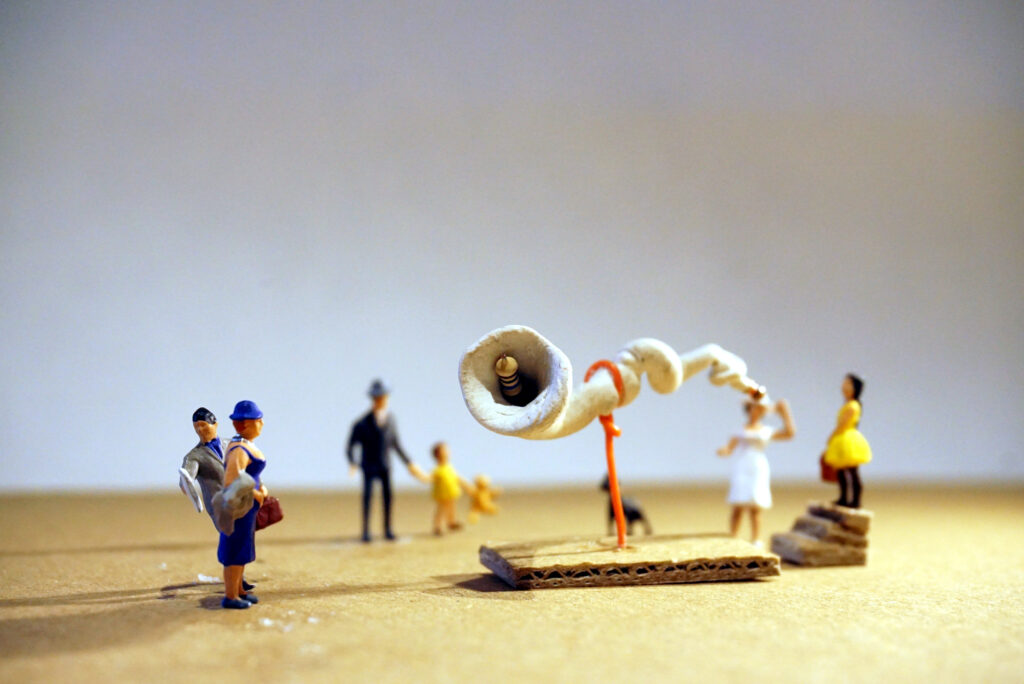
I am working on an idea for a project. Take the human voice, convert it into MIDI notes, synthesise the frequencies and you get something like Your Words are Music to my Ears. It does what it says on the tin – at least that’s the theory.
The image above shows a tiny mock-up for an installation. The white object and centre piece of the work is an oversized elongated and rather organic looking megaphone. The narrow end is supposed to represent an ear. Visitors are invited to speak or whisper into the ear and if by magic out comes the musical harmony of their words, which is amplified by the large funnel shaped opening at the other end.
The box of tricks is MaxMsp, the visual programming software. It all happens inside there.
The software allows you to make use of any kind of data whatever the source. Plug in a microphone, a camera, capture the twitter feeds, or download a stream of historical weather data published by the Met Office, and you are ready to go – make sound, manipulate and interact with a video playback or control other devices.
In the MaxMsp world there are no limits. Well, apart from your own capabilities. The learning curve is steep but the results are rewarding.
Presence detection patcher. This is a snippet of MaxMsp presence-detection-to-MIDI-note patcher using a camera to detect movement. The movement is translated into sound.
The project started with the Movement to MIDI patcher and the work with my friend Lou. (Making music and Alzheimer’s).
The name Patcher was totally alien to me at first when I started using MaxMsp. It is worth mentioning the meaning of the word since it comes up quite frequently. The music technology glossary describes a Patch as something that refers to an instrument sound, program or voice on a synthesiser or sampler. This term comes from the roots of hardware synthesis, where physical cables where used to connect and route signals in a matrix to create a unique sound (same concept as phone operators “patching” a call through, back in the day).
Patchers evolve. To make the presence-detection patcher more viable and visually engaging in the public domain and within a gallery context I included manipulated live-video and additive synthesis. At the moment the patcher remains a work in progress.
Video projections are sometime difficult to implement when for example the lighting condition call for a different approach.
I was musing over a project proposal for Wells Art Contemporary, which of course is a large public space, when I decided to adapt the patcher from movement-to-midi to audio-to-midi and to omit the camera input entirely.
In this patcher audio-to MIDI the harmonies are the same as in the previous example. The voice dictates the incoming data to MIDI conversion. In order to create a rich and sustained resonance I will need to experiment with note length and delay.
The logistics of implementing a video projections might have been an issue, but the more I considered working within a magnificent building such as Wells Cathedral and its sacred context, the more I felt drawn to the idea of spoken word and musical harmonies.
“In the beginning was the Word, and the Word was with God, and the Word was God.” (John 1:1) The words from the Gospel of John inadvertently come to my mind when working with spoken word and musical harmony in the given context. Words are the first instance of our thoughts, wishes and desires. We manifest ideas through spoken words followed by our action. Words create meaning. Words express love, can sooth and comfort us in a time of need. Words can be disharmonious, angry, destructive and deceiving. Sometimes they fail us. Words can be omitted and censored by political ideologies defying free speech. The sound of the human voice has audible frequencies we perceive before we are even born. The spoken word is what makes us human and gives a voice to the other. Words can divide us and unite.
The associations are plentiful, and yet in the end I want to achieve something light-hearted, engaging and fun. Your words become music, which, after all, is a universal language without borders.
The final piece should sound like this, at least that is the theory.



